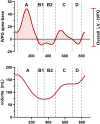Cardiovascular imaging in 2024: review of current research and innovations
- PMID: 40469529
- PMCID: PMC12134531
- DOI: 10.1093/ehjimp/qyaf066
Cardiovascular imaging in 2024: review of current research and innovations
Abstract
Cardiovascular imaging saw significant advancements in 2024, impacting technology, pathophysiology, and clinical applications. This review provides a comprehensive summary of the most impactful research in cardiovascular imaging published in 2024, highlighting technological advancements, as well as research on ischaemic heart disease, valvular heart disease, cardiomyopathies, and heart failure. It emphasizes the crucial role of artificial intelligence, large-scale studies, and technical improvements across echocardiography, cardiovascular magnetic resonance, computed tomography (CT), and nuclear medicine. In the context of ischaemic heart disease, non-invasive imaging strategies improve patient management and reduce invasive coronary angiograms and unnecessary follow-up testing. Computed tomography plaque characterization is a growing area of research, with potential for predicting disease severity, atherosclerosis progression, and clinical outcomes. In valvular heart disease, several imaging studies focused not only on transcatheter treatments for aortic stenosis, mitral regurgitation, and tricuspid regurgitation but also on specific conditions such as mitral valve prolapse and mitral annular disjunction. Finally, for heart failure and cardiomyopathies, imaging plays a vital role in early diagnosis and risk assessment, with newer techniques surpassing traditional methods in providing morpho-function characterization and in predicting long-term outcomes.
Keywords: cardiovascular magnetic resonance; computed tomography; echocardiography; multimodality imaging; positron emission tomography; single photon emission tomography.
© The Author(s) 2025. Published by Oxford University Press on behalf of the European Society of Cardiology.
Conflict of interest statement
Conflict of interest: G.P. received honorarium as speaker/consultant and institutional research grant from GE Healthcare, Bracco, Heartflow, Novartis, Alexion, Menarini. All other authors have nothing to disclose.
Figures







References
-
- Yafasov M, Olsen FJ, Skaarup KG, Højbjerg Lassen MC, Johansen ND, Lindgren FL et al. Normal values for left atrial strain, volume, and function derived from 3D echocardiography: the Copenhagen city heart study. Eur Heart J Cardiovasc Imaging 2024;25:602–12. - PubMed
-
- Cotella JI, Kovacs A, Addetia K, Fabian A, Asch FM, Lang RM. Three-dimensional echocardiographic evaluation of longitudinal and non-longitudinal components of right ventricular contraction: results from the world alliance of societies of echocardiography study. Eur Heart J Cardiovasc Imaging 2024;25:152–60. - PubMed
-
- Fortuni F, Biagioli P, Myagmardorj R, Mengoni A, Chua AP, Zuchi C et al. Left atrioventricular coupling index: a novel diastolic parameter to refine prognosis in heart failure. J Am Soc Echocardiogr 2024;37:1038–46. - PubMed
